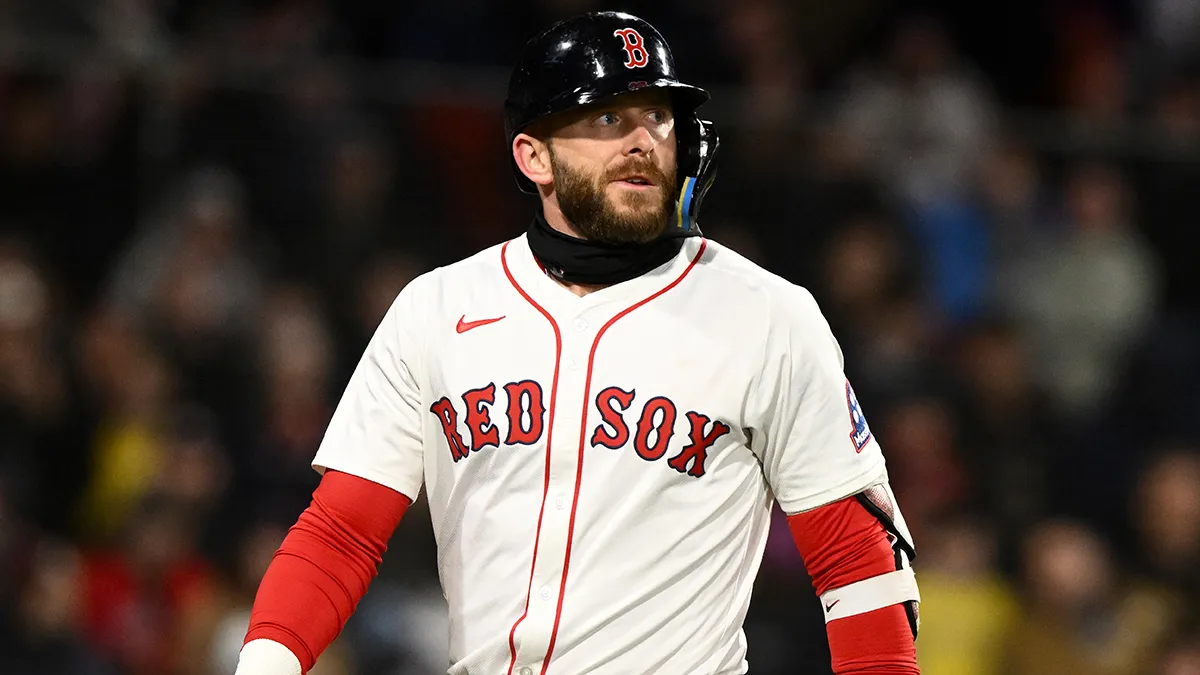BOSTON — When the Red Sox and Brian Johnson struggled against the White Sox on Sunday, Alex Cora turned to the September call-ups, a wave of arms who have spent most of their time with Triple-A Pawtucket. Monday afternoon instead brought the regulars out of the ‘pen — inlcluding an appearance from possibly every member of their eventual postseason bullpen.
Nate Eovaldi, the starter in Monday’s 8-2 victory over the Braves, seems to be destined for a relief role. After he lasted 3 1/3 innings, Brandon Workman, Steven Wright, Joe Kelly, Ryan Brasier, Heath Hembree, Matt Barnes and Craig Kimbrel pieced together the rest.
One game doesn’t really swing the reality: the Sox should, have, upgraded, the, ‘pen.
But enough about that little matter for the time being. This is the group the Sox have, and if you’re looking for reasons to believe this group can succeed, and signs to watch for as September rolls on, read on.
Hembree with men on
Hembree might indeed have the low pulse and calm state of mind to handle the toughest situations: those with inherited runners. Usually, though, a pitcher is good in those situations because of his underlying ability, more than anything else.
MORE FROM EVAN DRELLICH
Cora has turned to Hembree in jams more than anyone else. When Hembree entered in the seventh inning Monday, there were runners on the corners and two down. Those were Hembree’s team-leading 32nd and 33rd inherited runners, a dozen more now than the next closest, Joe Kelly.
Boston Red Sox
Find the latest Boston Red Sox news, highlights, analysis and more with NBC Sports Boston.
Hembree got Ozzie Albies swinging on an elevated fastball, a well-executed pitch and another successful strand job. Only seven runners he’s been handed, or about 21 percent, have come around.
Further proof he can handle the big moment right? Yes, but that’s probably not owed to some ability to handle a jam better than others that’s differentiated from the reason he’s good in any situation.
See the following numbers (entering the day):
Barnes has emerged
Overall, Barnes is a lot better than most people realize, despite his August struggles. So much so that if you compare his numbers below — he’s Pitcher A — to Craig Kimbrel, Pitcher B, you may be shocked to see how similar they are.
Barnes is averaging roughly 2 mph better on his fastball in 2018 than he did a year ago. That’s no small jump. He’s also getting a ton more whiffs on his curveball, at roughly 45 percent.
Kelly's slow stuff
The batting average against Kelly's curveball in 2017 was .429. It's .250 this year, per Brooks. His changeup is also a better-established force.
Kimbrel still strikes out a ton
Even as Kimbrel goes through a down year, arguably the worst of his career, he still can work out of jams created by his erratic command. He’s still incredibly difficult to make contact against. His swing and miss percentage is 40.2 percent, highest on the team. (Barnes is second at 36.9, ahead of Chris Sale at 35.)
Kimbrel also leads the Sox in fewest percentage of swings that result in balls in play, 23.6 percent, lesser than Sale.
Brasier doesn’t mess around
The wild card, the X-factor, the high-leverage Hail Mary: Ryan Brasier. His 30.8 swing-and-miss percentage is better than all but five Sox pitchers: Kimbrel, Barnes, Sale, Hembree and… William Cuevas.
But best of all? Brasier leads the Red Sox with a 70.8 percent first-pitch strike percentage. Second is Sale, at 68.2.
Thornburg can handle lefties
It’s a very small sample size, but Tyler Thornburg has done better against lefties this year, with a .742 OPS allowed, compared to righties, a .905 OPS allowed. In his career, Thornburg has shown an ability to neutralize hitters from both sides of the plate. If he can find his footing against righties, he can be a weapon that makes it easier not to carry a southpaw in the playoff bullpen. (Thornburg is the only one in this group who did not pitch on Monday.)
Steven Wright
His knuckleball is a bat out of hell.




